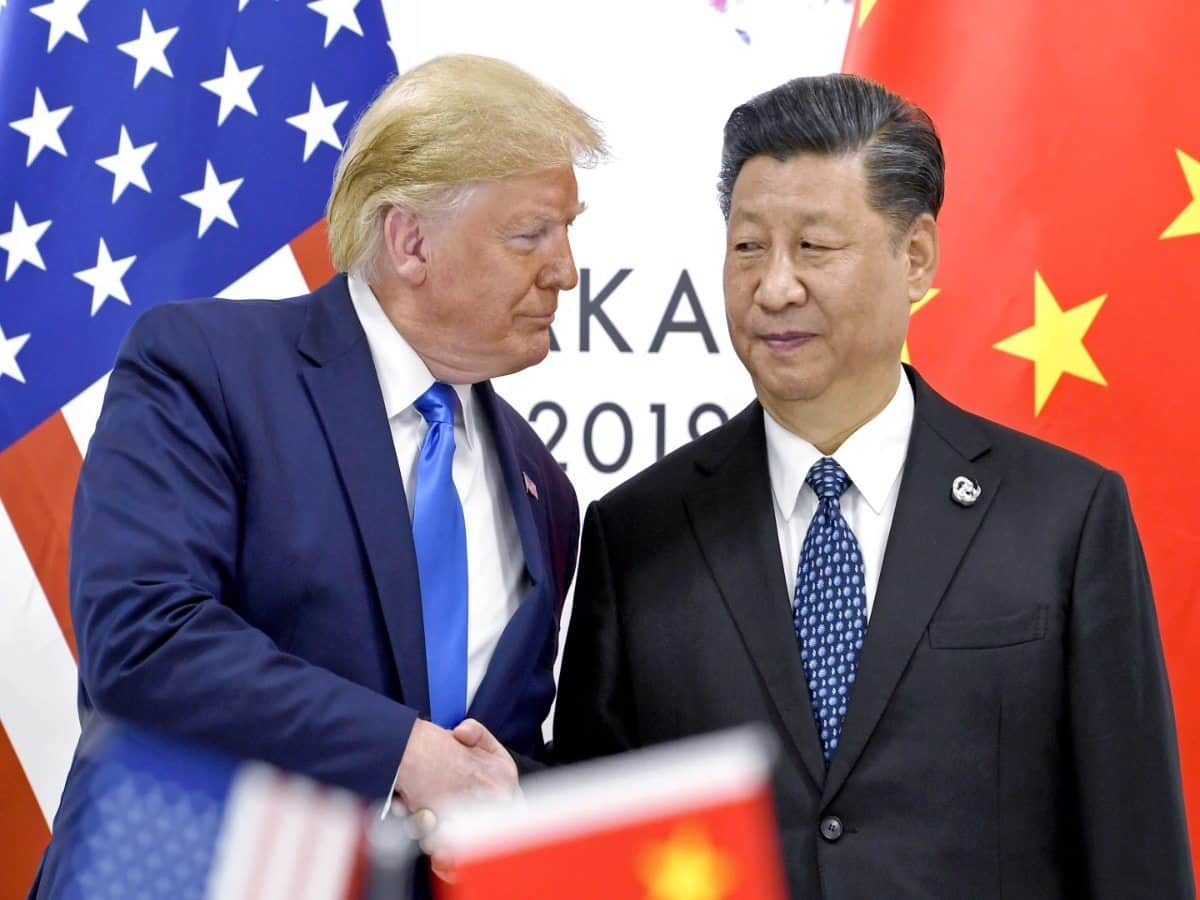President Donald Trump declared his meeting with Chinese President Xi Jinping a resounding success on Thursday, announcing a rollback of tariffs and new trade concessions as both nations sought to ease heightening tensions between the world’s two largest economies.
Speaking aboard Air Force One, Trump said the United States would reduce tariffs imposed earlier this year in response to China’s alleged sale of fentanyl-making chemicals, lowering them from 20 percent to 10 percent. The move effectively cuts the overall tariff rate on Chinese goods from 57 to 47 percent.
“I guess on the scale from 0 to 10, with ten being the best, I would say the meeting was a 12,” Trump said. “I think it was a 12.”
Treasury Secretary Scott Bessent later confirmed that China had committed to purchasing 25 million metric tons of American soybeans each year over the next three years, starting with 12 million metric tons between now and January. U.S. soybean exports to China had largely halted amid the trade dispute.
“So you know, our great soybean farmers, who the Chinese used as political pawns, that’s off the table, and they should prosper in the years to come,” Bessent told Fox Business Network’s Mornings with Maria.
Trump said he plans to visit China in April, with Xi expected to make a return trip to the U.S. later in the year. The two leaders also discussed high-tech trade issues, including the export of advanced computer chips, with Trump noting that Nvidia would begin direct talks with Chinese officials.
Trump hinted that a trade deal could be signed “pretty soon.”
Xi, for his part, said both sides would continue working to finalize agreements that would “provide peace of mind” to both countries and the wider international community.
“Both sides should take the long-term perspective into account, focusing on the benefits of cooperation rather than falling into a vicious cycle of mutual retaliation,” Xi said, according to a state media summary.
Their 100-minute discussion in Busan, South Korea, came at a delicate moment, with the U.S. and China still locked in competition over manufacturing, artificial intelligence, and global influence, particularly regarding the conflict in Ukraine.
Trump’s tariff-heavy approach since returning to office, coupled with China’s retaliatory export limits on rare earth minerals, added urgency to the talks. Both nations, analysts said, are aware that prolonged hostilities could destabilize the global economy.
Before their meeting began, Xi emphasized cooperation despite differences.
“Given our different national conditions, we do not always see eye to eye with each other,” he said through a translator. “It is normal for the two leading economies of the world to have frictions now and then.”
China’s Xinhua News Agency reported a slight variation in translation, quoting Xi as saying that having “some differences” was inevitable.
The summit took place in a modest gray building with a blue roof on a South Korean military base near Busan’s international airport, an understated setting compared to the luxury venues that typically host G7 or G20 events.
READ ALSO: Trump pressures NATO countries to quit Russian oil, warns China of 50–100% tariffs
Leading up to the talks, both sides signaled a willingness to compromise. U.S. officials had suggested Trump would forgo his threat to impose an additional 100 percent import tax, while China appeared ready to ease rare earth restrictions and resume major agricultural purchases.
Preparatory meetings earlier in the week in Kuala Lumpur produced what negotiators called a “preliminary consensus.” China’s top trade envoy, Li Chenggang, described the talks as “very successful,” a view echoed by Bessent, who said both sides had agreed on a workable framework.
On Thursday morning, Trump took to Truth Social to dub the gathering the “G2,” highlighting the two countries’ status as economic superpowers.
The announcement of a possible thaw has already buoyed investors. Stock markets rose on expectations of a trade framework that could calm years of instability between the United States and China.
Yet experts remain cautious. Trump’s earlier negotiations with China this year in Geneva and London have repeatedly stalled after initial breakthroughs.
“The proposed deal on the table fits the pattern we’ve seen all year: short-term stabilization dressed up as strategic progress,” said Craig Singleton, senior director of the China program at the Foundation for Defense of Democracies in an AP report. “Both sides are managing volatility, calibrating just enough cooperation to avert crisis while the deeper rivalry endures.”
Over the past year, both nations have tested each other’s economic limits. Trump’s weapon of choice has been tariffs—fluctuating and unpredictable. After initially announcing plans to raise Chinese import duties to 145 percent in April, he backed off when markets reacted negatively. Then, on October 10, he threatened a 100 percent import tax in response to Beijing’s rare earth export limits, only to roll back the rate to 47 percent “effective immediately.”
But on the part of China, leverage comes through its dominance in the production and processing of rare earth minerals, essential components in fighter jets, robotics, and electric vehicles. The country’s decision earlier this month to tighten export restrictions stressed how each side uses economic tools to gain bargaining power, only to ease them when talks resume.
As the meeting concluded, Trump prepared to return to the U.S. while Xi planned to stay in South Korea for the Asia-Pacific Economic Cooperation summit opening Friday.
“Xi sees an opportunity to position China as a reliable partner and bolster bilateral and multilateral relations with countries frustrated by the U.S. administration’s tariff policy,” said Jay Truesdale, a former State Department official and CEO of TD International, a risk and intelligence advisory firm.










